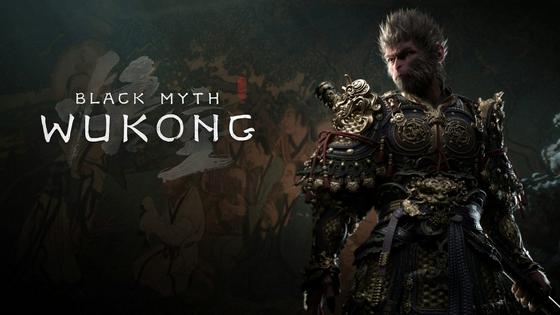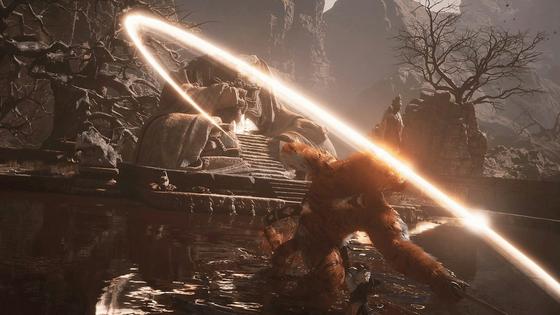Black Myth: Wukong – how China’s gaming revolution is fueling its tech power
Published in Political News
It may sound far-fetched, but the future of global technology supremacy could hinge on a video game.
Black Myth: Wukong, China’s latest blockbuster, isn’t just breaking gaming records – it could be driving a critical shift in the global balance of technological power. What seems like just another action-packed video game is, in reality, a vital component in Beijing’s larger strategy to challenge Western dominance in the tech industry.
The game, released by Chinese company Game Science on Aug. 19, 2024, is based on the legendary 16th century Chinese novel “Journey to the West.” The novel tells the story of a monk, Xuanzang, who journeys to India in search of Buddhist scrolls. The monkey Sun Wukong protects the monk by confronting and battling various demons and spirits.
Black Myth: Wukong has captivated millions with its stunning visuals and storytelling. It quickly became a cultural sensation in China and abroad, attracting widespread attention and praise for its graphic fidelity and technological sophistication.
As global affairs scholars, we see that the game’s success goes beyond the number of downloads or accolades. It’s what this success is driving within China’s technology sector that has far-reaching consequences.
For years, China has been playing catch-up in the tech race, particularly in the production of semiconductors – the tiny microchips that power everything from smartphones to advanced artificial intelligence systems. The United States has maintained its dominance in this field by limiting China’s access to the most advanced chip-making technology.
As of 2024, China has shifted away from its aggressive “wolf warrior” diplomacy to a more cooperative approach in order to rebuild international ties. The government has also issued mandates for companies like Huawei to develop domestic chips. However, China’s success in boosting semiconductor development and production using these approaches has been limited.
Historically, video games have played a significant role in driving technological innovation in the semiconductor industry. From the early days of the 8-bit Nintendo Entertainment System to the modern PlayStation 5, gaming has always pushed chipmakers to develop faster, more efficient processors and graphics processing units, or GPUs. The intense graphical requirements of modern games – high resolutions, faster frame rates and real-time rendering – demand the most advanced semiconductor technology. The development of advanced GPUs by companies like NVIDIA was directly influenced by the gaming industry’s needs.
Gamers require advanced processors to enjoy Black Myth: Wukong’s high-end visual and gameplay experience. Built using the state-of-the-art Unreal Engine 5 video game development tool, the game is a visual spectacle featuring lifelike graphics, seamless open-world environments and complex combat systems. The game is available for PlayStation 5 and PCs, and Game Science plans to release an Xbox version.
As Black Myth: Wukong sweeps across gaming platforms, it not only puts pressure on China’s semiconductor makers to build more and better chips, but it also reveals the vast market potential for high-performance hardware, especially for gaming PCs equipped with powerful GPUs. The game’s success showcases just how big the demand is.
Market analysts expect the Chinese video game industry to reach revenues of US$66.13 billion in 2024, compared with $78.01 billion in the U.S. Analysts predict the game will have annual sales of 30 million to 40 million copies in 2024.
China’s gaming industry has surged into a global powerhouse, yet it remains dependent on foreign-made chips. Coupled with the West’s restrictions on chip exports, Wukong has become a key catalyst for China’s semiconductor development, and domestic companies now face growing pressure to innovate.
This pressure aligns with Beijing’s broader technological ambitions. The government’s “Made in China 2025” plan calls for technological self-reliance, particularly in sectors like semiconductors, where China lags behind. And advanced GPUs haven’t been confined to the entertainment industry. They have become integral to advances in AI, including deep learning and autonomous systems.
While it might seem strange to link video games with geopolitics, Black Myth: Wukong is more than just entertainment. It’s a tool in China’s soft power arsenal. Soft power is nations influencing each other through cultural exports. For decades, the West, particularly the U.S., dominated global culture through Hollywood, music and video games.
Now, China is flexing its cultural muscle. The success of Black Myth: Wukong abroad, where it has been hailed as a game-changing title, is part of Beijing’s strategy to export its culture and technological prowess. Millions of gamers around the world are now being exposed to Chinese mythology, art and storytelling through a highly sophisticated digital medium.
But Black Myth: Wukong isn’t just a cultural triumph for China; it’s a warning shot. The country is taking advantage of its booming gaming industry to drive advances in a field that will define the future of technology. This game not only exports Chinese culture but also strengthens its tech base by accelerating the demand for domestic semiconductors.
While Black Myth: Wukong entertains millions, it also shows China’s growing influence in the digital realm. In the future, we might not look back at Black Myth: Wukong as just a successful video game, but as a catalyst that helped China close the technological gap with the West. Beijing is playing a long game, and video games like Black Myth: Wukong are turning out to be effective weapons.
This article is republished from The Conversation, a nonprofit, independent news organization bringing you facts and trustworthy analysis to help you make sense of our complex world. It was written by: Shaoyu Yuan, Rutgers University - Newark and Jun Xiang, Rutgers University - Newark
Read more:
A video game based on the Chinese novel ‘Journey to the West’ is the most recent example of innovative retelling of this popular story
Growth of autocracies will expand Chinese global influence via Belt and Road Initiative as it enters second decade
China leans into using AI − even as the US leads in developing it
The authors do not work for, consult, own shares in or receive funding from any company or organization that would benefit from this article, and have disclosed no relevant affiliations beyond their academic appointment.
































































Comments